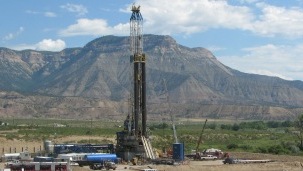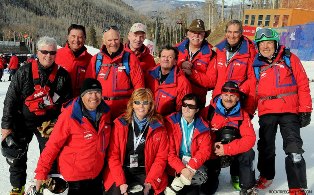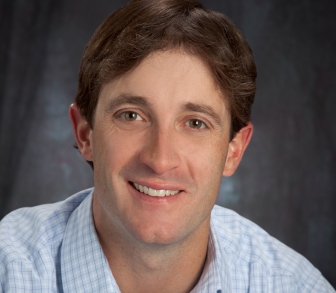USGS scientist says 'fracking, fluid injection, earthquakes an area of active research'
Feds say most glaring example still Rocky Mountain Arsenal case in 1960s
“That process can cause very small earthquakes, but the fracking process doesn't really, we think, induce large earthquakes,” USGS scientist Mike Blanpied said on a video chat. “The thing that can induce larger earthquakes is the high-pressure waste fluid injection that's done in some places.”
Blanpied was answering questions from the public in the wake of Tuesday's 5.8-magnitude earthquake in Louisa County, Va., and Monday's 5.3-magnitude earthquake in Las Animas County, Colo.

Questions have been raised about the possible connection between earthquake swarms and fracking – a process in which water, sand and often undisclosed chemicals are injected under high pressure deep into natural gas wells to fracture tight geological formations and free up more gas. Fracking occurs in about 90 percent of all natural gas wells in the United States.
The fluids are often brought back up and stored on the surface for re-use and later disposed of in separate deep-injection wells. And it's those disposal wells that in the past have prompted investigations by the USGS after rare earthquake swarms in southern Colorado, where in 2001 officials said they could “not rule out the possibility” the wells caused the quakes.
Tuesday's Virginia earthquake, felt in Washington, D.C., and farther north along the East Coast, was not in a heavy gas-drilling area but is fairly close to the border of West Virginia, a state with major coal-bed methane reserves and a great deal of drilling and mining activity.
“However, as far as we're aware, there's not really the mining or the fluid injection processes going on in Virginia that would have connected this earthquake with anything like that,” Blanpied said Friday. “Just to be clear, the connection between fracking and fluid injection and earthquakes is an area of active research and really we're only starting to learn about how those things are connected.”
Last month, the Arkansas Oil and Gas Commission identified four disposal wells it says need to be shut down in the wake of earthquake swarms in that state last spring. The state also ordered a moratorium on new disposal wells in the area.
The USGS cites a Colorado case in the 1960s as the most famous example of deep-injection wells causing an earthquake.
“The largest and most widely known resulted from fluid injection at the Rocky Mountain Arsenal near Denver, Colo.,” the USGS states. “In 1967, an earthquake of magnitude 5.5 followed a series of smaller earthquakes. Injection had been discontinued at the site in the previous year once the link between the fluid injection and the earlier series of earthquakes was established.”
The U.S. Army had been disposing of toxic fluids at depths of nearly 12,000 feet but had to discontinue the process after the quakes.
Some gas-drilling proponents say the concern about fracking, fluid disposal and earthquakes is yet another attempt by the environmental community to sound unwarranted alarms about the industry.
Although she was speaking before the Colorado and Virginia quakes and not addressing those specific concerns, Colorado Oil and Gas Association President and CEO Tisha Schuller recently told an energy conference in Aspen that public concern about fracking — blasted by some on the Western Slope for potentially contaminating groundwater supplies — is akin to skepticism by others about climate change.
“In the same way that the climate movement has to deal with this unimaginable conflict about people not believing in science, we have to do that in the conversation about hydraulic fracturing,” Schuller said, according to the Aspen Daily News. “And the nature of the conversation is as important as the information ... The public must be willing to hear that it's safe when it's demonstrated.”
Editor's note: Real Vail editor and Colorado Independent Western Slope environment and energy reporter David O. Williams discussed this topic with guest host David Sirota on the nationally syndicated Randi Rhodes radio show on Thursday.
Follow David O. Williams on Twitter.
![]() 1 Comment on "USGS scientist says 'fracking, fluid injection, earthquakes an area of active research'"
1 Comment on "USGS scientist says 'fracking, fluid injection, earthquakes an area of active research'"


 Vail Town Council to weigh new plan to redevelop T...
Vail Town Council to weigh new plan to redevelop T...  All about indexes
All about indexes  Transforming your social security into a winning r...
Transforming your social security into a winning r...  Pass sales, real estate transactions, revenues inc...
Pass sales, real estate transactions, revenues inc...  Vail Valley native with passion for Biophilic inte...
Vail Valley native with passion for Biophilic inte...  Beaver Creek starts work on new summer activities
Beaver Creek starts work on new summer activities  Land Trust, ECO Trails, Vail Resorts team up to cl...
Land Trust, ECO Trails, Vail Resorts team up to cl...  EUROVISION named Host Broadcaster for 2015 World A...
EUROVISION named Host Broadcaster for 2015 World A...  Vail Resorts brings back Lindsey Vonn's 'School of...
Vail Resorts brings back Lindsey Vonn's 'School of...  Hundreds turn out for 2015 World Championships vol...
Hundreds turn out for 2015 World Championships vol...  Eagle County Senior Health Expo and 9th Annual Hea...
Eagle County Senior Health Expo and 9th Annual Hea...  Final race of Vail Mountain Trail Running Series s...
Final race of Vail Mountain Trail Running Series s...  Before you write your will ...
Before you write your will ...  2015 World Ski Championships volunteer recruitment...
2015 World Ski Championships volunteer recruitment...  Ascent Sotheby’s International Realty in Vail an...
Ascent Sotheby’s International Realty in Vail an...  CDOT outlines road closures for local stages of US...
CDOT outlines road closures for local stages of US...  Italian artist creates unique trophies for Vail, B...
Italian artist creates unique trophies for Vail, B...  Vail Recreation District once again hosting Jake W...
Vail Recreation District once again hosting Jake W... 


Potomac Oracle – Dec. 12, 2011, at 4:25 p.m.
Why is the Army involved in disposing of this toxic waste waterinjected by private sector firms? What is the public cost of this subsidy?
How difficult would it be to analyze the toxic waste water to derive the types of chemicals used in fracking? Couldn't a separation process be used to compare and separate naturally occuring vs newly introduced chemical compounds to find out whether the stuff is carcinogenic?
Why is there so little reportage of the gigantic use of scarce water to extract a liter of gas?
Why don't political jurisdiction charge the gas and oil cos. for the water?
What happens to all the methane?
And how do we know that some of these swarms are the result of methane hydrate dissociation. Particularly, in the arctic and continental shelf?
Do these greedy opponents of renewable energy even care that they are likely to trigger massive CH4 quakes?